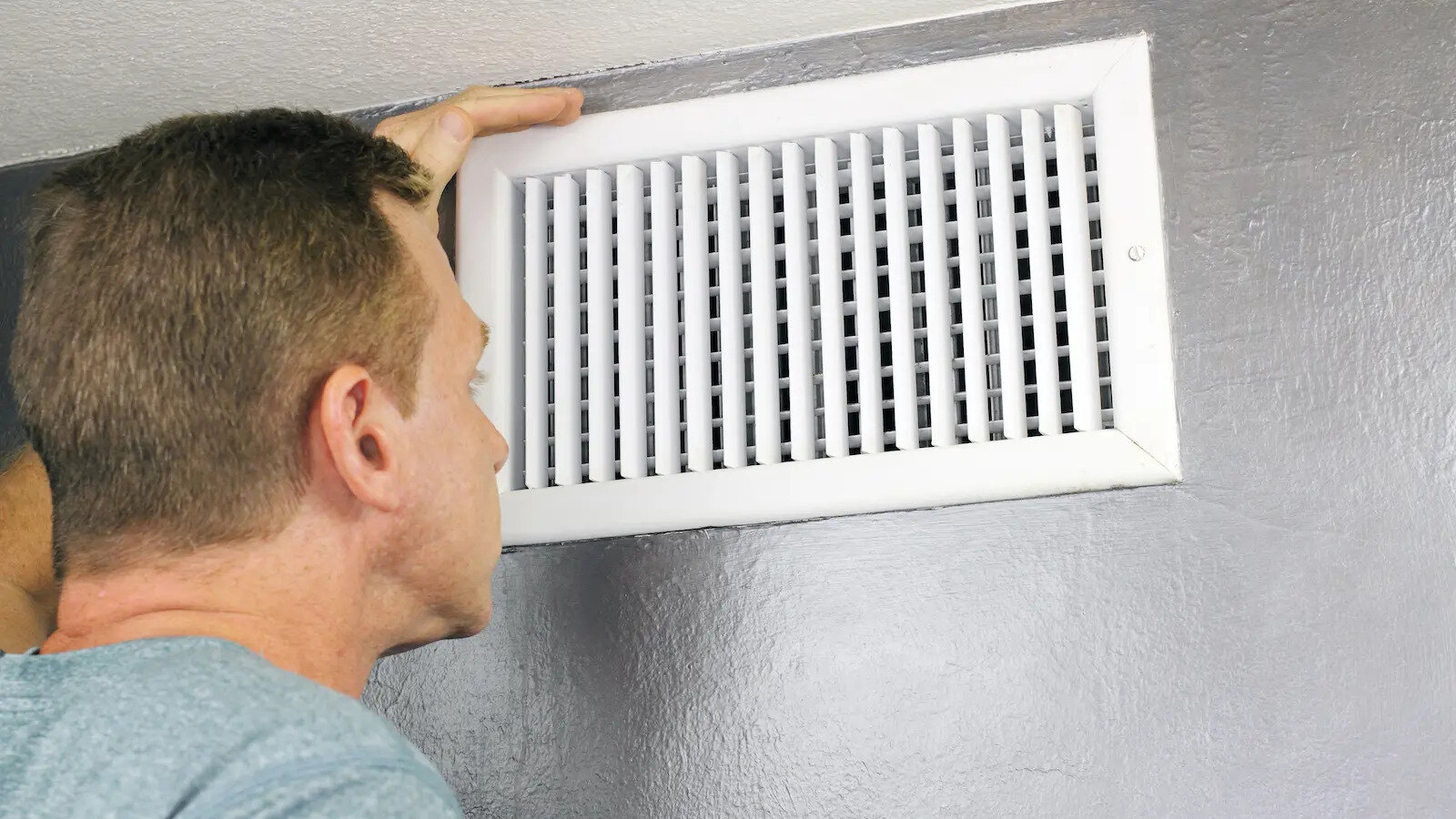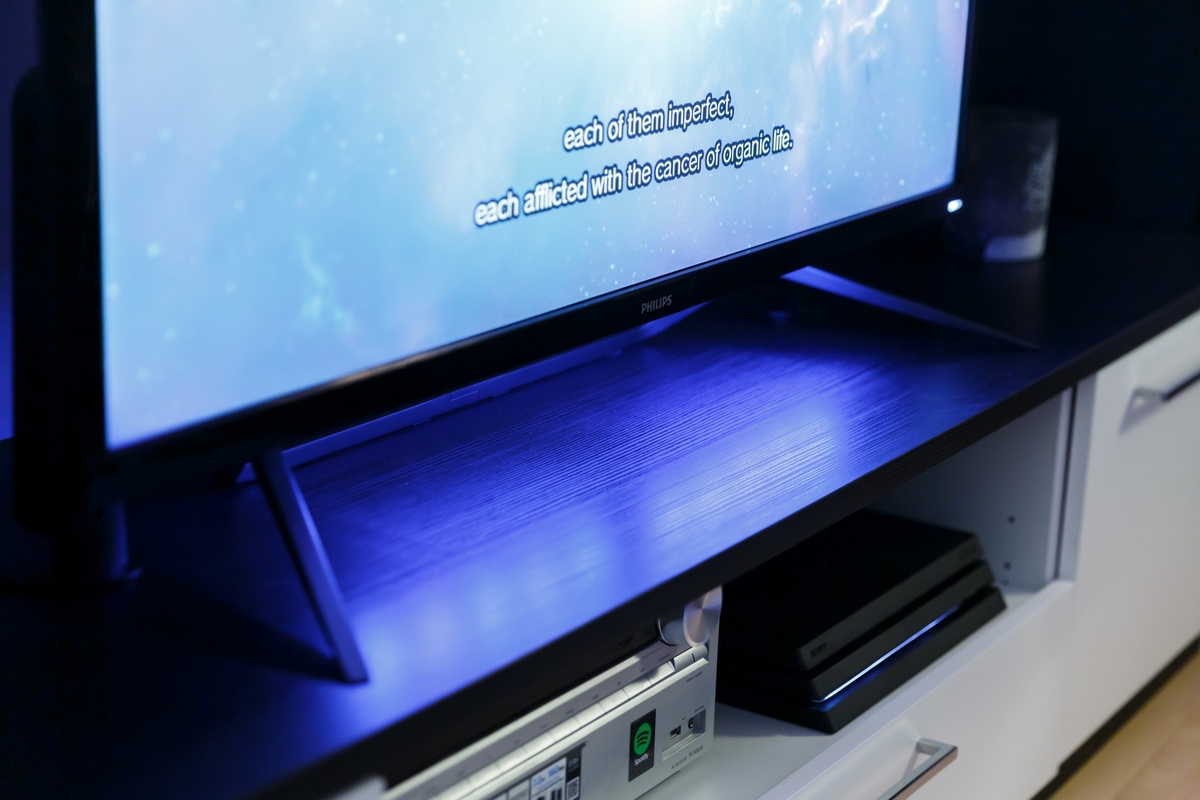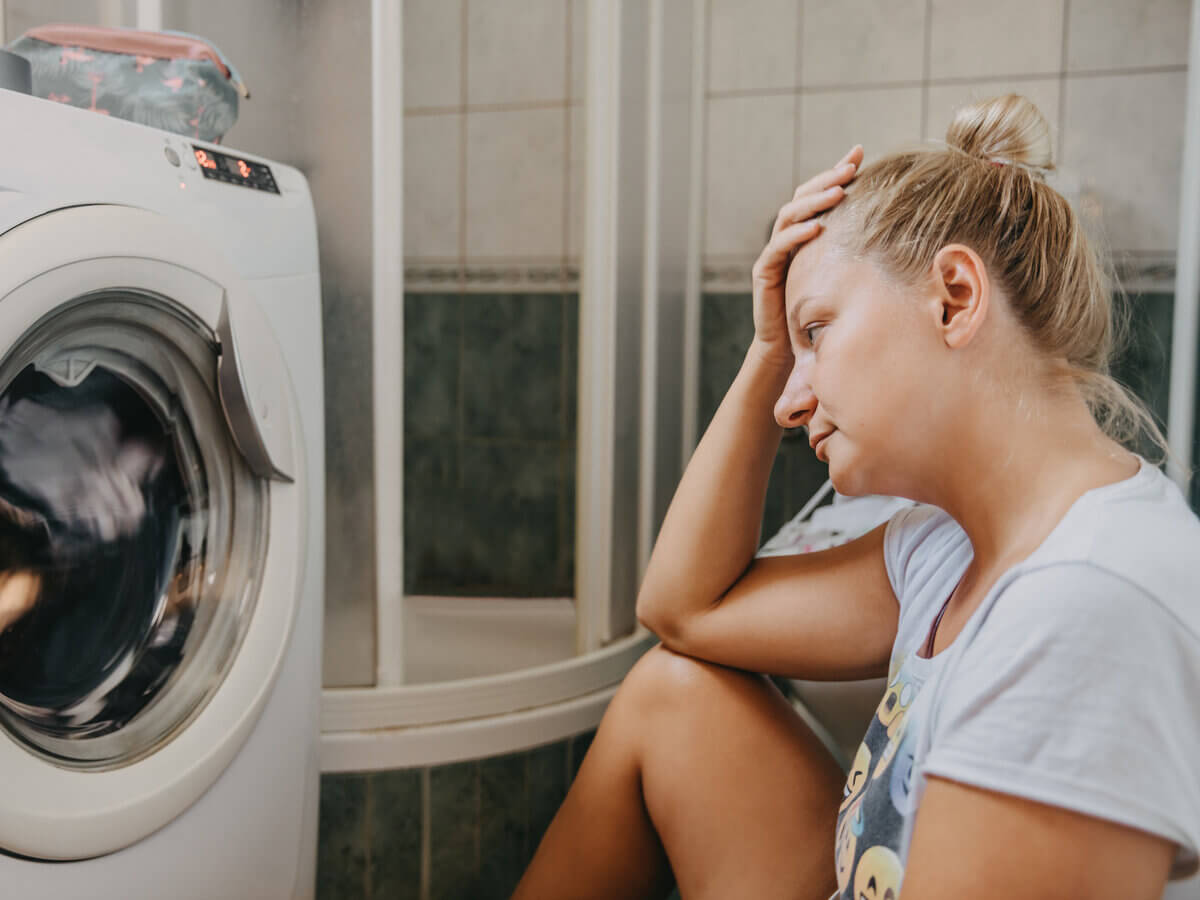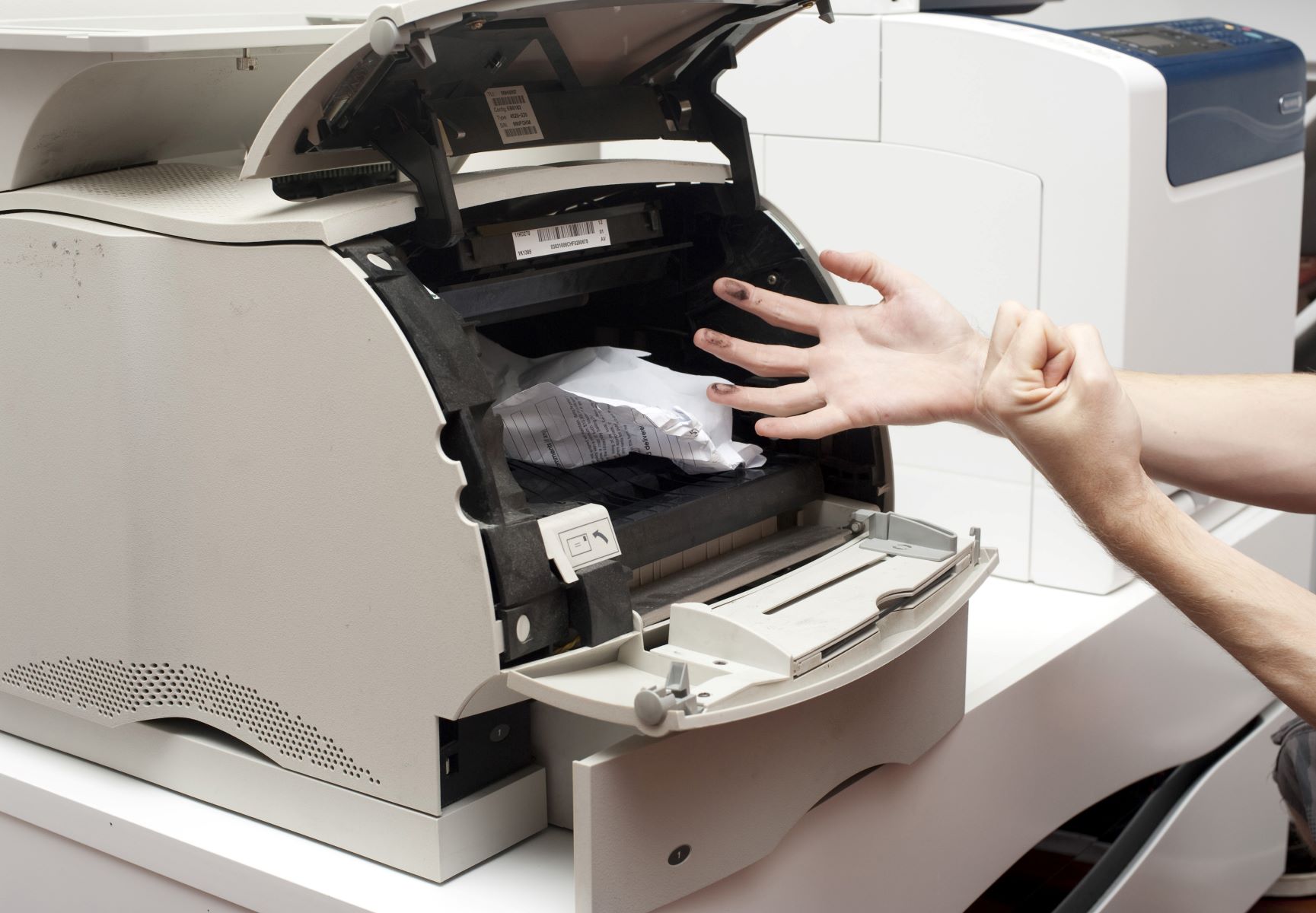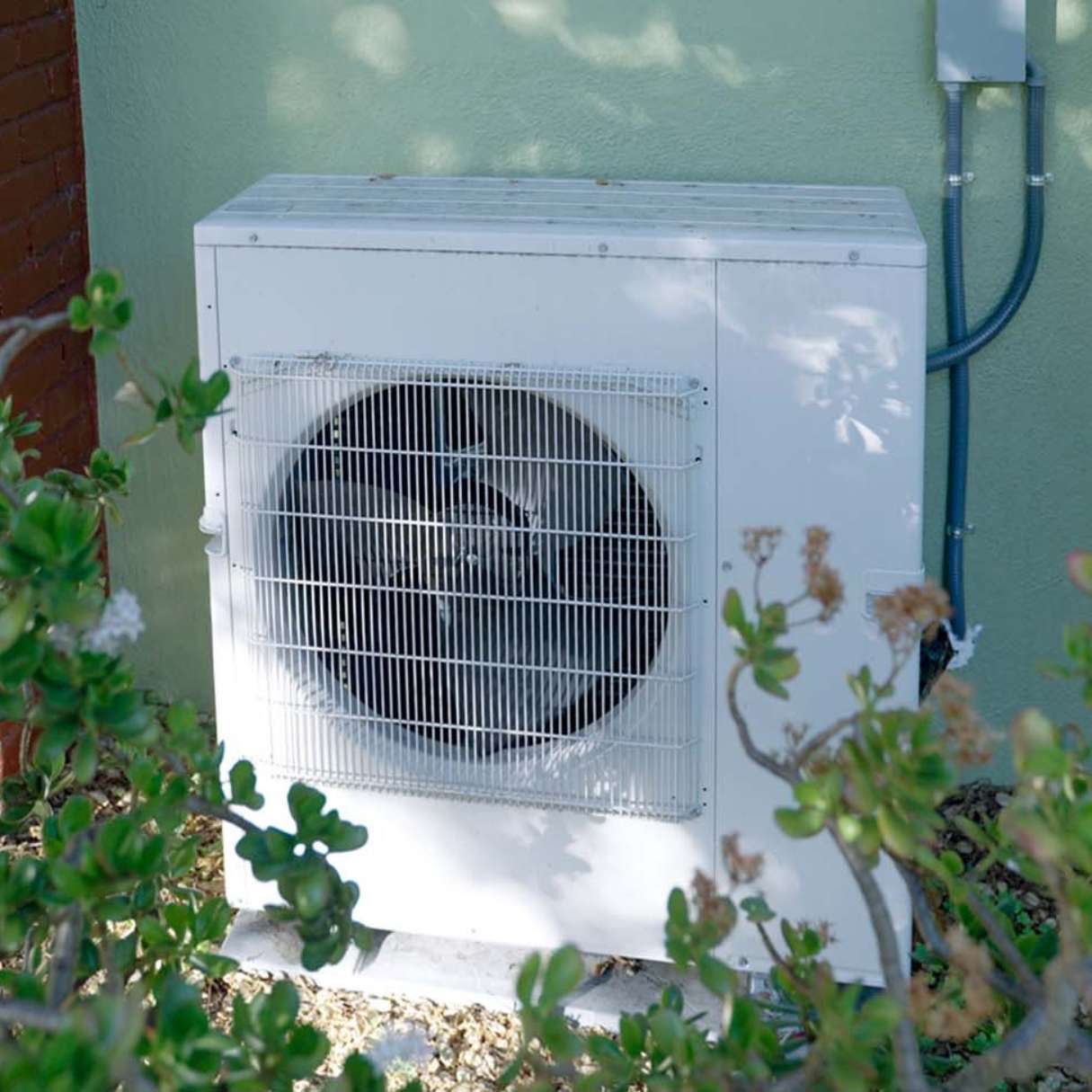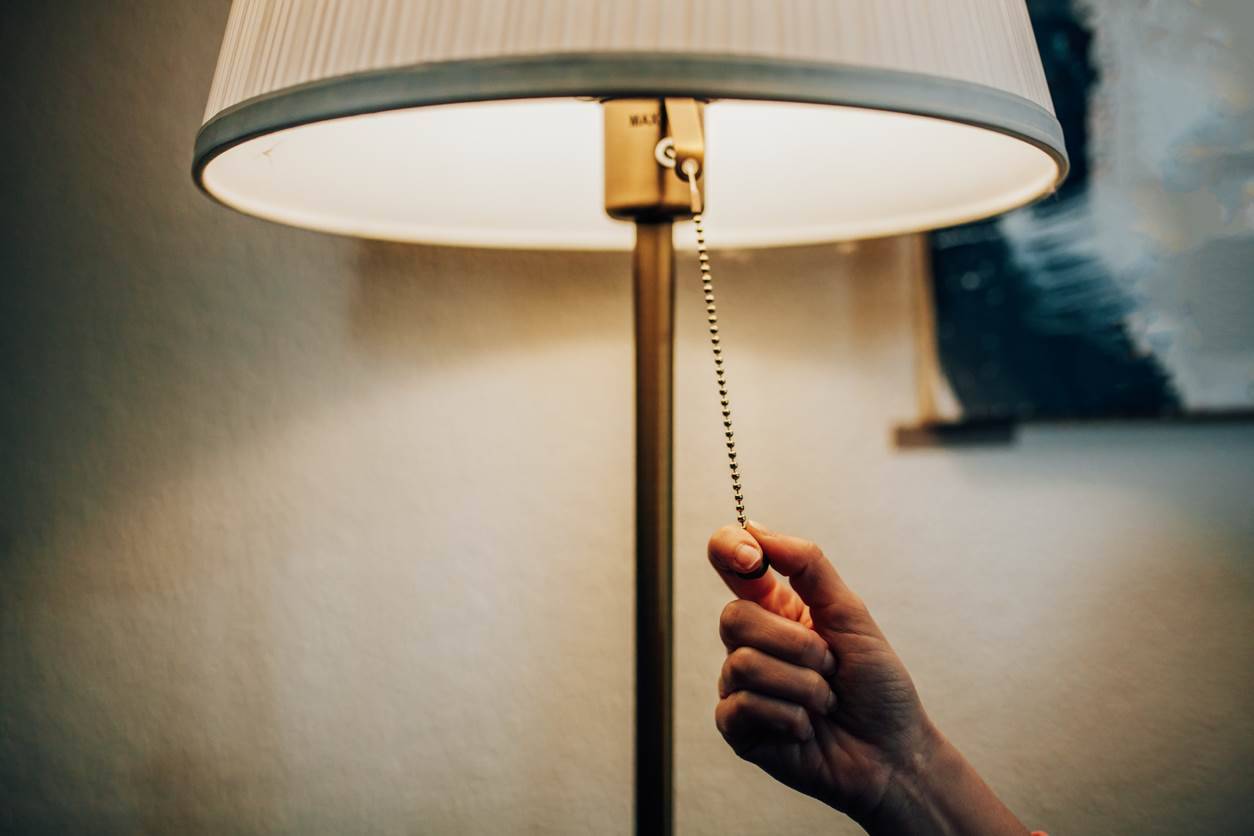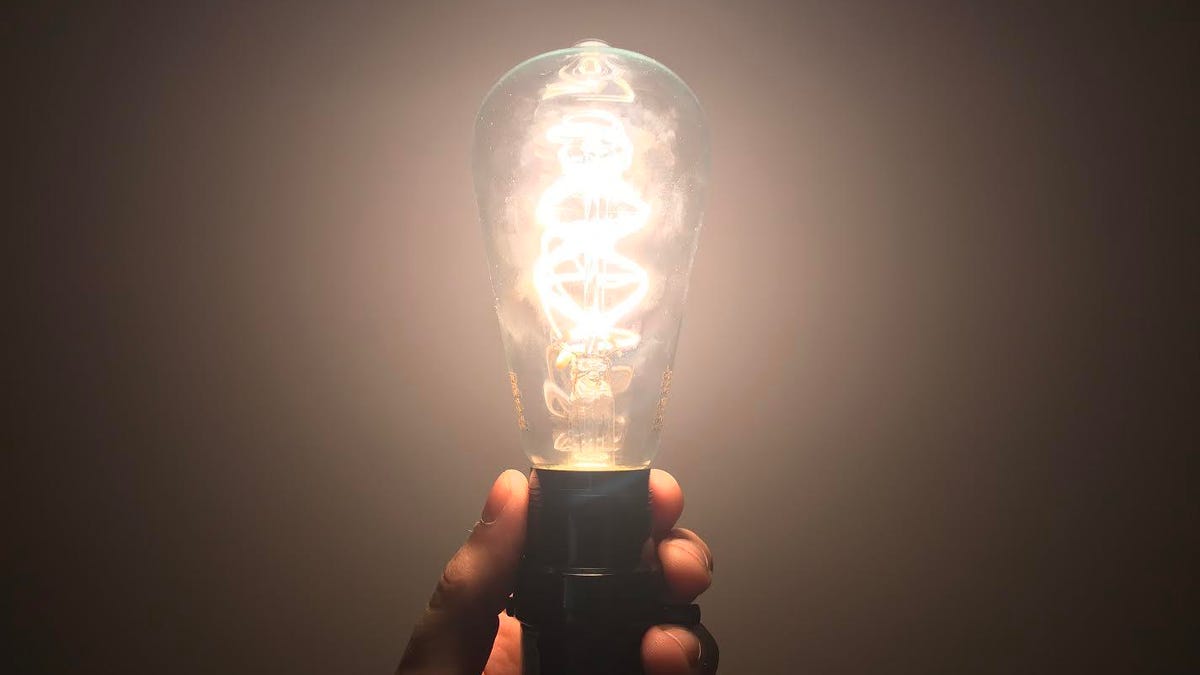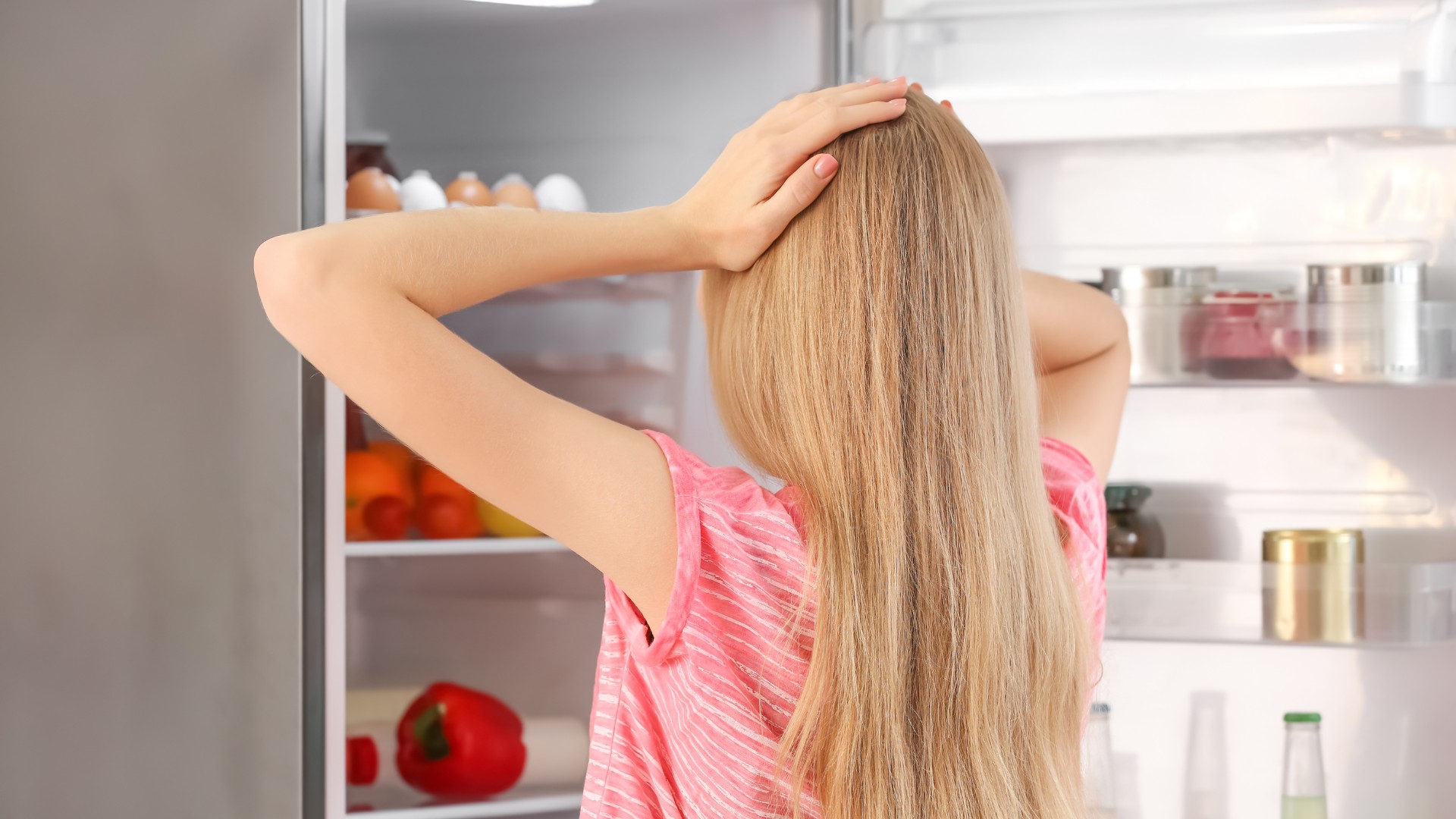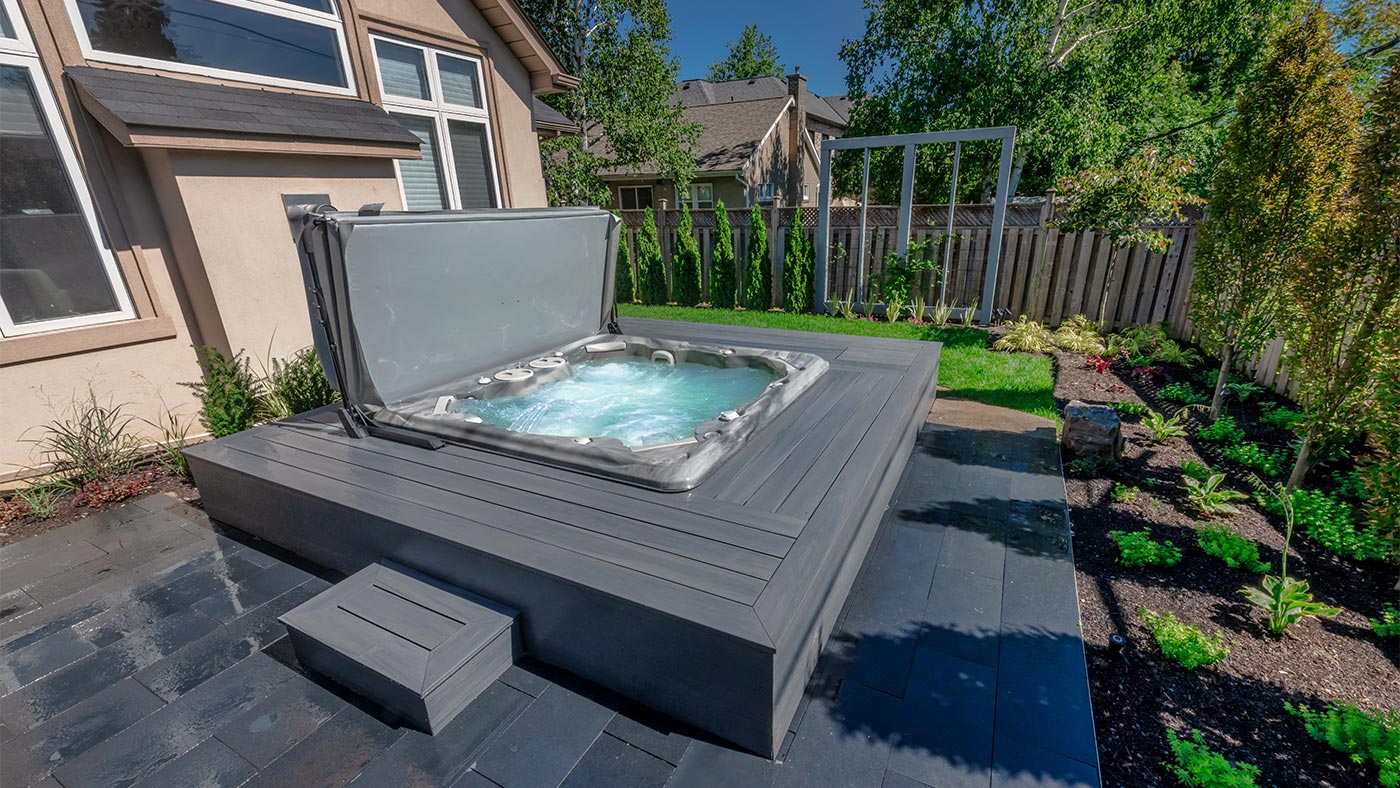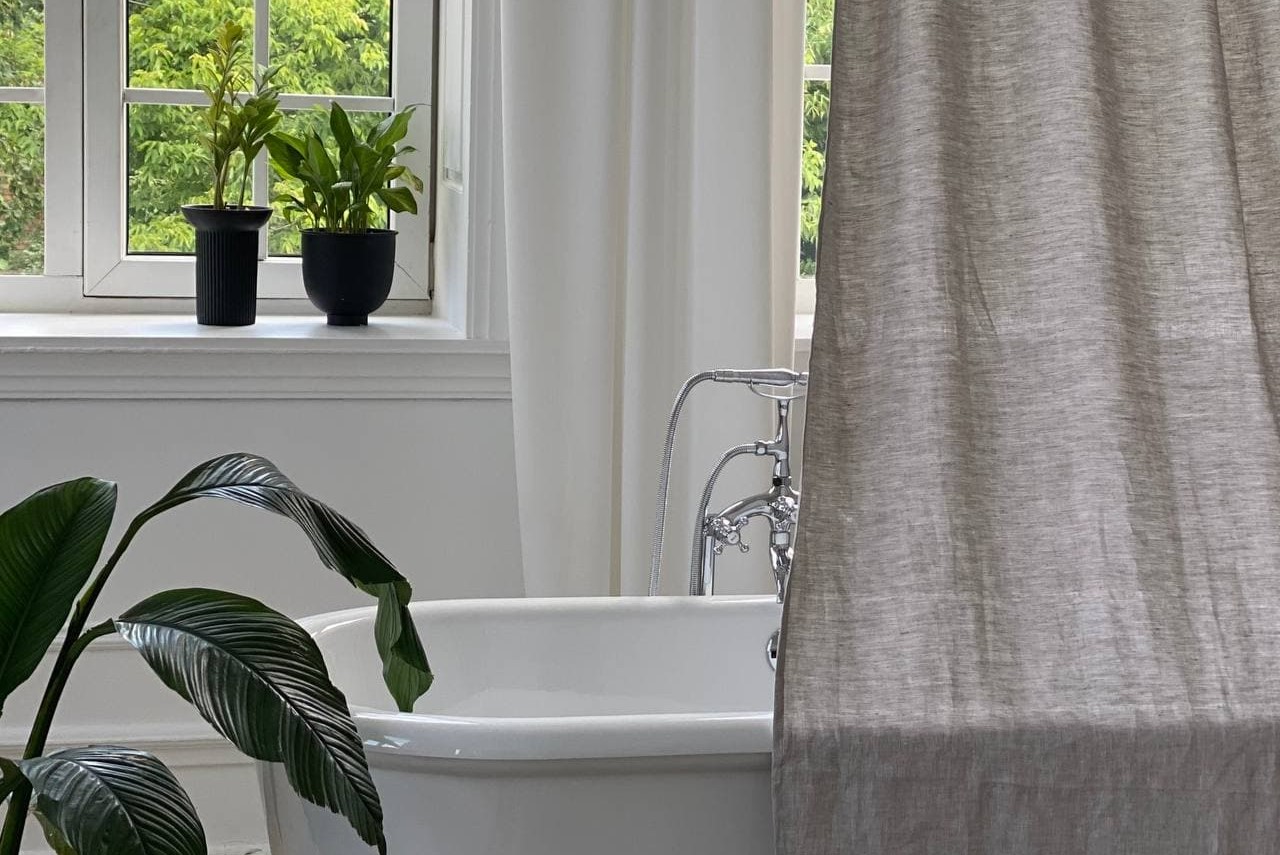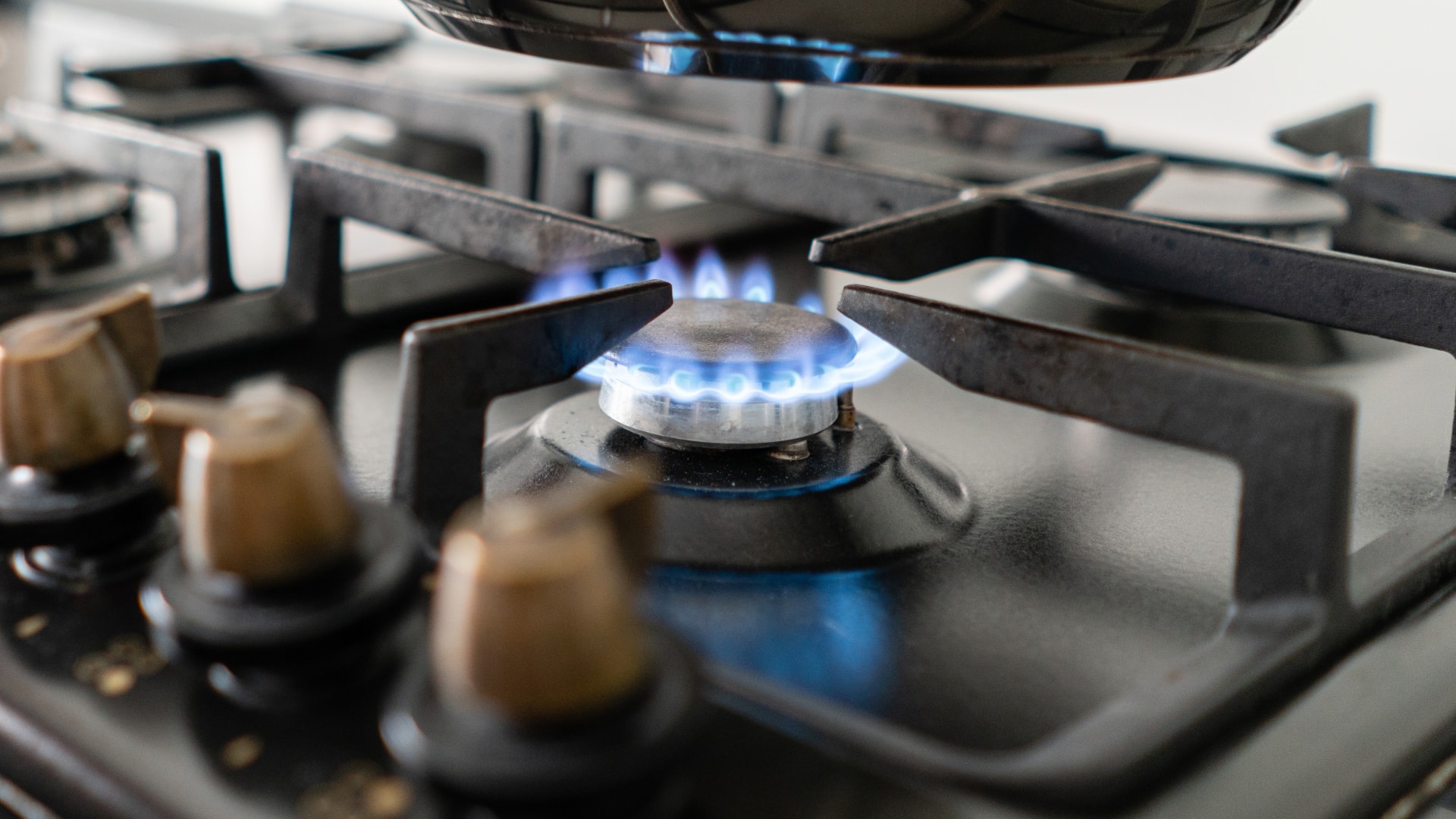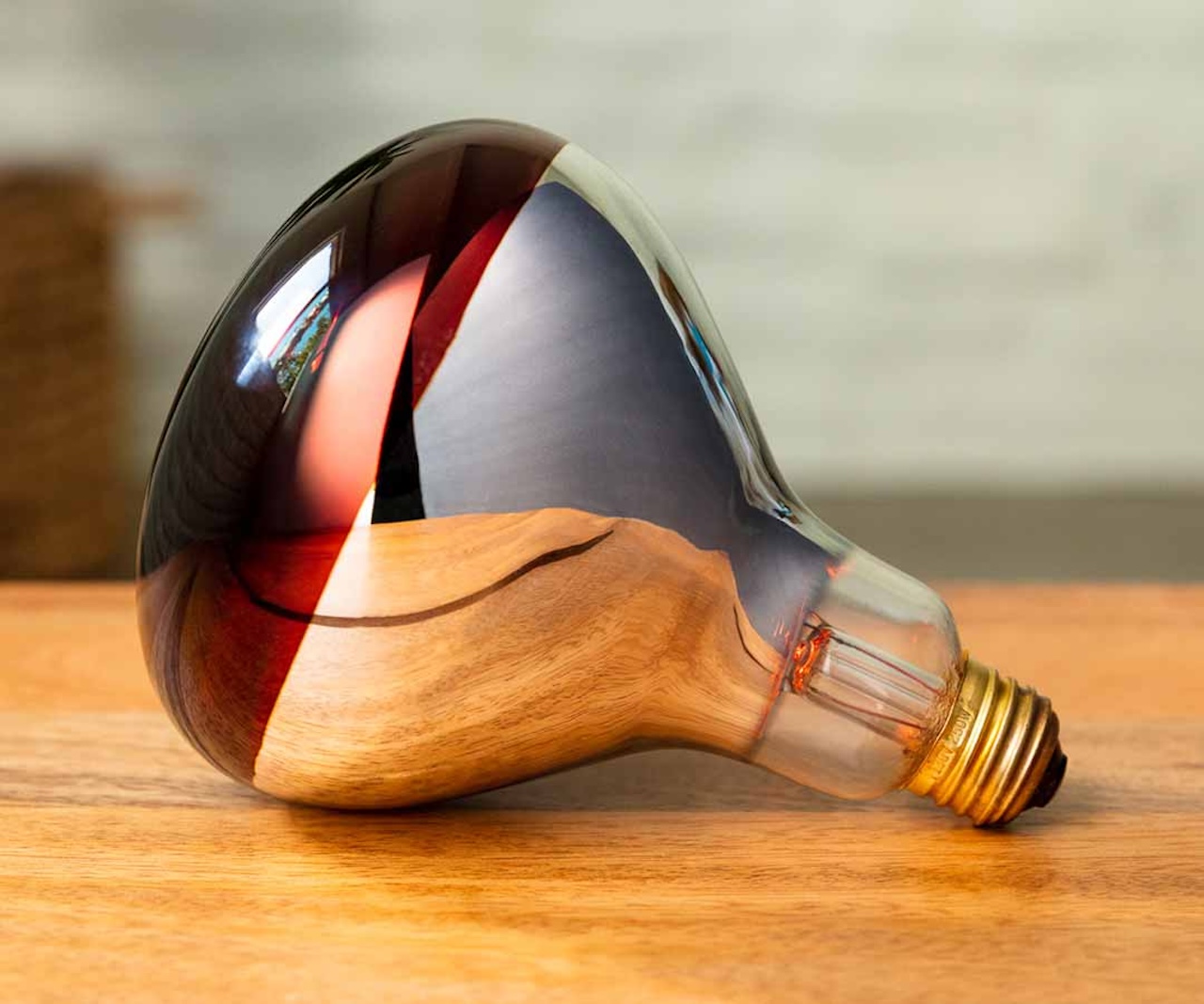

Furniture
Why Does My Heat Lamp Bulb Keep Blowing
Modified: March 6, 2024
Discover why your heat lamp bulb keeps blowing and how to prevent it. Get expert tips on furniture maintenance to extend the lifespan of your heat lamp bulbs.
(Many of the links in this article redirect to a specific reviewed product. Your purchase of these products through affiliate links helps to generate commission for Storables.com, at no extra cost. Learn more)
Introduction
Welcome to the world of heat lamp bulbs! If you’re reading this article, chances are you’ve experienced the frustrating issue of your heat lamp bulb blowing out more frequently than expected. But fear not, because in this article, we’ll uncover the reasons behind this common problem and provide you with insights on how to resolve it.
Heat lamp bulbs are an essential component of various applications, including reptile terrariums, poultry farming, outdoor heating, and even in the food industry. They provide a consistent source of heat, promoting warmth and comfort in specific environments. However, despite their importance, heat lamp bulbs can sometimes be prone to blowing out unexpectedly.
Understanding the underlying factors behind frequent heat lamp bulb blowouts will help you address the issue effectively. It could be a result of high voltage or power surges, using incorrect wattages or voltages, poor bulb quality, overheating due to improper use or inadequate ventilation, or even incorrect installation or wiring.
By unraveling these potential reasons and exploring troubleshooting and solution options, you’ll be equipped with the knowledge to prevent future blowouts and ensure the long-lasting performance of your heat lamp bulbs.
Key Takeaways:
- Ensure you use the correct wattage and voltage for your heat lamp bulbs to prevent frequent blowouts. Matching the specifications of the bulbs with those of the fixture ensures safe and efficient operation, reducing the risk of overheating and blowouts.
- Regularly inspect and maintain the electrical connections of your heat lamp fixture to minimize the risk of frequent blowouts. Secure connections ensure a stable and consistent electrical supply, providing optimal conditions for your bulbs to operate effectively and safely.
Understanding Heat Lamp Bulbs
Before delving into the reasons behind heat lamp bulb blowouts, let’s first understand the basics of these specialized bulbs. Heat lamp bulbs are designed to emit infrared radiation, which provides a focused and intense heat source. This makes them suitable for applications where warmth is required, such as reptile terrariums, agricultural settings, and outdoor heating.
Heat lamp bulbs are typically made of materials that can withstand high temperatures. They are available in various wattages and voltages, allowing users to choose the appropriate level of heat output for their specific needs. It’s important to note that not all bulbs are compatible with every heating fixture, so be sure to check the compatibility before purchasing.
In terms of their construction, heat lamp bulbs consist of a filament housed in a heat-resistant casing. This filament heats up when electricity passes through it, emitting infrared radiation in the process. The casing is designed to protect the filament and dissipate heat effectively.
It’s essential to understand that heat lamp bulbs are not a one-size-fits-all solution. Depending on the intended use, you may need to select a specific type of bulb. For example, some bulbs are designed to emit UV light, which is crucial for providing the necessary spectrum for reptiles. Others may have a red or clear coating, which can affect the color and intensity of the emitted heat.
Proper usage and maintenance play a vital role in ensuring the longevity of heat lamp bulbs. Adhering to the manufacturer’s guidelines regarding wattage, voltage, and usage instructions is crucial. Additionally, regular cleaning and inspection of the bulb and the fixture will help identify any potential issues before they escalate.
Understanding the different components and functions of heat lamp bulbs provides a foundation for troubleshooting and finding solutions to prevent frequent blowouts. Now, let’s explore the common reasons behind this issue and how to address them effectively.
Common Reasons for Frequent Bulb Blowouts
Heat lamp bulbs are designed to provide long-lasting heat, but there are several reasons why they may blow out more frequently than expected. It’s essential to identify these reasons to address the issue properly. Here are some common factors that can contribute to frequent bulb blowouts:
- High Voltage or Power Surges: Excessive voltage or sudden power surges can put undue stress on the heat lamp bulb, causing it to blow out. Fluctuations in the electrical supply, faulty wiring, or power spikes in the grid can lead to this issue. Installing a surge protector or voltage regulator can help mitigate these problems.
- Incorrect Wattage or Voltage: Using a heat lamp bulb with a wattage or voltage that exceeds the specifications of the fixture can lead to frequent blowouts. It’s important to match the bulb’s wattage and voltage requirements with the rating of the fixture to ensure compatibility and prevent overheating.
- Poor Quality or Defective Bulbs: The quality of the heat lamp bulb plays a significant role in its lifespan. Low-quality bulbs or those manufactured with defects may not withstand the heat or electrical demands, leading to premature failure. It’s advisable to invest in high-quality bulbs from reputable manufacturers to minimize the risk of blowouts.
- Overheating or Improper Use: Excessive heat buildup around the bulb or improper use can contribute to premature blowouts. Placing flammable materials too close to the bulb or obstructing the ventilation can cause the bulb to overheat and fail. It’s crucial to follow the manufacturer’s guidelines regarding distance, proper use, and ventilation to prevent overheating.
- Inadequate Ventilation or Airflow: Heat lamp bulbs require sufficient airflow and ventilation to dissipate heat effectively. If the fixture or enclosure doesn’t provide adequate ventilation, heat can accumulate around the bulb, increasing the risk of blowouts. Ensure that there is sufficient airflow and appropriate ventilation to maintain optimal operating conditions.
- Improper Installation or Wiring: Incorrect installation or faulty wiring can create electrical issues that contribute to frequent bulb blowouts. Loose connections, exposed wires, or improper grounding can cause fluctuations in the electrical supply and put additional strain on the bulb. It’s recommended to have a professional electrician install the fixture and ensure proper wiring to avoid such issues.
Identifying the specific reason behind frequent heat lamp bulb blowouts is crucial in finding a solution. By addressing these common factors, you can significantly reduce the risk of blowouts and prolong the lifespan of your heat lamp bulbs. In the following sections, we’ll explore troubleshooting techniques and effective solutions to prevent and alleviate this issue.
High Voltage or Power Surges
One of the common reasons for frequent heat lamp bulb blowouts is high voltage or power surges. Excessive voltage or sudden spikes in power can put a significant strain on the bulb, causing it to fail prematurely. Understanding and addressing this issue is crucial to ensuring the longevity of your heat lamp bulbs.
Power surges can occur due to various reasons, including lightning strikes, faulty wiring, or power grid fluctuations. These surges release a sudden burst of electrical energy, which can overwhelm the heat lamp bulb and lead to its failure. Similarly, if the voltage supplied to the bulb consistently exceeds its maximum rating, it can shorten the bulb’s lifespan and cause frequent blowouts.
To protect your heat lamp bulbs from high voltage and power surges, it’s advisable to use a surge protector or voltage regulator. These devices act as a buffer between the electrical supply and the bulb, stabilizing voltage levels and preventing sudden spikes from reaching the bulb. Surge protectors and voltage regulators are readily available in hardware stores and are relatively easy to install.
When selecting a surge protector or voltage regulator, make sure to choose a model that is suitable for the wattage and voltage requirements of your heat lamp bulb. Check the product details or consult a professional if you’re unsure about the compatibility. Additionally, make sure to follow the manufacturer’s instructions for installation and periodic maintenance to ensure the effectiveness of these devices.
Furthermore, it’s crucial to identify and address any underlying issues in your electrical system that could be causing high voltage or power surges. If you frequently experience power surges or notice other electrical anomalies in your home or facility, it’s recommended to consult a licensed electrician. They can inspect your electrical system, identify any faulty wiring or issues with the power supply, and take appropriate measures to rectify the problem.
By mitigating the risks associated with high voltage or power surges, you can significantly reduce the likelihood of frequent heat lamp bulb blowouts. Protecting your bulbs from electrical fluctuations ensures their long-term functionality, saves you from the inconvenience of constant replacements, and helps maintain a safe and efficient lighting system.
Incorrect Wattage or Voltage
Using incorrect wattage or voltage is another common reason for frequent heat lamp bulb blowouts. The wattage and voltage requirements of a heat lamp bulb are essential factors that determine its performance and lifespan. When these specifications are not properly matched with the fixture or power supply, it can lead to premature bulb failure.
Using a bulb with wattage that exceeds the maximum rating of the fixture can cause it to overheat, leading to frequent blowouts. On the other hand, using a bulb with wattage that is too low for the fixture may not provide sufficient heat output, resulting in poor performance.
Similarly, using a bulb with incorrect voltage can also contribute to frequent blowouts. If the voltage supplied to the bulb is higher or lower than its specified voltage range, it can cause excessive stress on the filament and other components, leading to early failure.
To avoid these issues, it’s crucial to carefully check the wattage and voltage requirements of your heat lamp fixture. These specifications can usually be found on the fixture itself or in the product documentation. Take note of the maximum wattage and voltage that the fixture can safely handle.
When purchasing a new heat lamp bulb, make sure to select one that matches the wattage and voltage requirements of your fixture. Avoid the temptation to use a higher-wattage bulb for increased heat output, as it can lead to overheating and blowouts. Similarly, using a lower-wattage bulb than required may result in insufficient heat.
If you’re unsure about the wattage or voltage requirements of your fixture or if you’re experiencing frequent blowouts despite using the correct bulbs, it’s advisable to consult a professional electrician. They can inspect the fixture, analyze the electrical system, and ensure that the wiring and voltage supply are compatible with the bulb.
By using the correct wattage and voltage for your heat lamp bulbs, you can significantly reduce the risk of frequent blowouts. Matching the specifications of the bulb with those of the fixture ensures optimal performance and longevity, ultimately saving you time and money on replacements.
Read more: Why Does My Blow-Up Mattress Keep Deflating
Poor Quality or Defective Bulbs
The quality of heat lamp bulbs is a crucial factor that can significantly impact their performance and lifespan. Poor quality bulbs or those manufactured with defects are more likely to fail prematurely and contribute to frequent blowouts.
Low-quality bulbs may not be built to withstand the heat and electrical demands of heat lamp applications. They may have inferior materials, inadequate filament construction, or subpar casings, making them more prone to failure. These bulbs may not be able to dissipate heat effectively, leading to overheating and subsequent blowouts.
In addition to low-quality bulbs, those manufactured with defects can also cause frequent blowouts. These defects can range from structural issues in the filament to problems with the bulb’s electrical components. Bulbs with manufacturing defects may have weak spots that are more susceptible to damage, leading to premature failure.
To prevent these issues, it’s important to invest in high-quality heat lamp bulbs from reputable manufacturers. Look for bulbs that are specifically designed for heat lamp applications and meet industry standards. Brands with a good reputation for producing reliable products are more likely to provide bulbs that have undergone strict quality control measures.
While high-quality bulbs may come at a slightly higher price, they offer greater reliability and longevity. By investing in bulbs with superior construction and materials, you can reduce the frequency of blowouts and minimize the inconvenience of constantly replacing bulbs.
Inspecting the bulbs upon purchase is also a wise practice. Look for any visible defects, such as cracks in the casing or filament abnormalities. If you notice any defects, it’s best to return or exchange the bulb before use.
Lastly, it’s important to take note of the warranty or guarantee provided by the manufacturer. Reputable manufacturers often offer warranties to protect against defective bulbs. If you experience frequent blowouts despite using high-quality bulbs, check if you can avail of the warranty and have the bulbs replaced or repaired.
By investing in high-quality bulbs and ensuring their defect-free condition, you can minimize the risk of frequent blowouts and enjoy longer-lasting heat lamp performance.
Overheating or Improper Use
Overheating due to improper use is a common cause of frequent blowouts in heat lamp bulbs. When heat is not properly managed or the bulb is used inappropriately, it can lead to excessive heat buildup and premature failure.
One of the main factors contributing to overheating is placing flammable materials too close to the heat lamp. Heat lamp bulbs emit intense heat, and if they come into direct contact with flammable objects such as curtains, paper, or plastic, it can create a fire hazard. Additionally, the intense heat can cause the bulb to overheat and fail. It is crucial to maintain a safe distance between the bulb and any flammable materials to prevent overheating.
Another aspect of improper use is obstructing ventilation around the bulb. Heat lamp fixtures are designed to provide adequate airflow to dissipate heat effectively. If the airflow is restricted or ventilation is inadequate, heat can accumulate around the bulb, leading to overheating and blowouts. Ensure that the fixture is installed in a manner that allows for proper ventilation and airflow around the bulb.
Moreover, using heat lamps in environments with high humidity levels can also contribute to overheating. Excessive moisture in the air can affect the performance of the bulb, causing it to deteriorate faster and ultimately leading to more frequent blowouts. If you are using heat lamps in humid environments, consider using specialized bulbs that are designed to withstand high humidity levels.
Proper usage of heat lamp bulbs is essential to prevent overheating and increase their lifespan. Follow the manufacturer’s guidelines regarding the recommended distance between the bulb and any objects, as well as the recommended duration of use. Regularly inspect the area around the bulb for any signs of overheating, such as discoloration or melting of nearby materials. If you notice any issues, adjust the positioning of the bulb or consider alternative cooling solutions.
Additionally, ensure that the heat lamp is used within its intended application. Heat lamp bulbs are designed for specific purposes, such as reptile terrariums, agricultural settings, or outdoor heating. Using them for other purposes or in incompatible fixtures can put unnecessary stress on the bulb and result in premature blowouts.
By practicing proper use and avoiding common mistakes, such as placing flammable materials too close or obstructing ventilation, you can prevent overheating and extend the lifespan of your heat lamp bulbs.
Inadequate Ventilation or Airflow
Proper ventilation and airflow are crucial factors in maintaining the performance and longevity of heat lamp bulbs. Inadequate ventilation can lead to heat buildup around the bulb, causing it to overheat and blow out more frequently.
Heat lamp fixtures are designed to provide airflow and dissipate heat effectively. Without proper ventilation, the heat emitted by the bulb can become trapped, creating a “heat pocket” around the bulb. This trapped heat can cause the filament and other components of the bulb to overheat, leading to premature failure.
To ensure adequate ventilation and airflow, it’s important to follow the manufacturer’s guidelines for the installation of the heat lamp fixture. Avoid tightly enclosing the bulb or blocking the airflow around it with objects or materials. Allow sufficient space around the bulb to allow for proper airflow.
If your heat lamp is installed inside an enclosure, ensure that the enclosure has proper ventilation openings. These vents allow fresh air to enter and hot air to exit, preventing heat buildup. Regularly clean and inspect these vents to ensure they are not blocked or obstructed by dust, debris, or other objects.
Additionally, consider the positioning of the heat lamp fixture. Mounting the fixture in a location where there is already good natural airflow can help promote effective heat dissipation. Placing the fixture near a fan or in an area with cross-ventilation can also aid in maintaining proper airflow around the bulb.
Moreover, the use of reflective surfaces can improve the distribution of heat and help prevent localized overheating. Reflectors or heat shields placed behind the bulb can redirect the heat and distribute it evenly, reducing the risk of overheating in one area.
Regular maintenance of the heat lamp fixture is necessary to ensure optimal performance. Clean the fixture periodically, removing any dust or debris that may have accumulated. This helps to maintain proper airflow and prevent blockages that can hinder heat dissipation.
By ensuring adequate ventilation and airflow around your heat lamp bulb, you can effectively mitigate overheating and minimize the occurrence of frequent blowouts. Proper installation, regular maintenance, and consideration of the surrounding environment will contribute to the optimal performance and longevity of your heat lamp bulbs.
Make sure the wattage of the heat lamp bulb matches the fixture’s rating. Using a bulb with higher wattage can cause it to blow.
Improper Installation or Wiring
Improper installation or faulty wiring can contribute to frequent heat lamp bulb blowouts. When the heat lamp fixture is not installed correctly or there are issues with the electrical wiring, it can cause fluctuations in the electrical supply and put additional strain on the bulb, leading to premature failures.
One common issue is loose or improper electrical connections. If the connections between the fixture and the power source are not secure, it can result in intermittent electrical flow or voltage fluctuations. These fluctuations can cause the bulb to flicker, overheat, or blow out. It’s important to ensure that all electrical connections are tight and securely fastened.
Exposed or damaged wiring can also contribute to frequent blowouts. If the wiring insulation is compromised or there are exposed wires, it can create a safety hazard and cause electrical issues. These issues can lead to abnormal voltage flow, overheating, or short circuits, all of which can lead to more frequent bulb failures. It’s crucial to regularly inspect the wiring and address any issues promptly.
Additionally, improper grounding can also be a factor in frequent blowouts. Grounding provides a path for excess electrical energy to safely dissipate, protecting the electrical system and preventing damage to the bulb. If the heat lamp fixture is not properly grounded or if the grounding system is faulty, it can lead to electrical imbalances and increase the risk of bulb blowouts.
Improper installation of the heat lamp fixture itself can also contribute to frequent blowouts. If the fixture is not securely mounted or if it is installed in a manner that hinders proper ventilation, it can result in overheating and premature bulb failure. It’s crucial to follow the manufacturer’s installation guidelines and ensure that the fixture is installed correctly and securely.
To prevent issues related to improper installation or wiring, it’s advisable to consult a professional electrician. They can inspect the fixture, evaluate the wiring, and rectify any issues with the electrical system. A professional can also ensure that the fixture is grounded properly and that all connections are secure, minimizing the risk of frequent heat lamp bulb blowouts.
By addressing issues related to improper installation or faulty wiring, you can significantly reduce the occurrence of frequent blowouts. Proper installation, secure electrical connections, and a well-maintained electrical system will help ensure the longevity and reliable performance of your heat lamp bulbs.
Troubleshooting and Solutions
If you are experiencing frequent blowouts with your heat lamp bulbs, don’t worry! There are several troubleshooting steps and solutions that can help address the issue and prolong the lifespan of your bulbs. Here are some effective steps to follow:
- Check Electrical Connections: Ensure that all electrical connections are tight and secure. Loose connections can cause voltage fluctuations and put additional strain on the bulb, leading to blowouts. Tighten any loose connections and inspect the wiring for any signs of damage or wear.
- Use the Correct Wattage and Voltage: Check that you are using heat lamp bulbs with the correct wattage and voltage for your fixture. Using bulbs with incorrect specifications can result in overheating and frequent blowouts. Refer to the manufacturer’s guidelines and specifications to ensure compatibility.
- Invest in High-Quality Bulbs: Using high-quality bulbs from reputable manufacturers can significantly reduce the risk of frequent blowouts. These bulbs are built to withstand the demands of heat lamp applications and offer better performance and lifespan. Look for bulbs that have undergone strict quality control measures.
- Ensure Proper Use and Ventilation: Properly use your heat lamp bulbs and ensure adequate ventilation and airflow around the fixture. Avoid placing flammable materials too close to the bulb and obstructing ventilation openings. Allow sufficient space for heat dissipation to prevent overheating and blowouts.
- Seek Professional Assistance: If you have tried troubleshooting steps and the problem persists, it’s advisable to consult a professional electrician. They can conduct a thorough inspection of the fixture, the electrical system, and wiring connections. A professional can identify any underlying issues and provide appropriate solutions.
Implementing these troubleshooting steps and solutions can help prevent and alleviate frequent blowouts with your heat lamp bulbs. Remember to always follow manufacturer’s guidelines, perform regular maintenance, and seek professional assistance when needed. Taking these proactive measures will ensure optimal performance and longevity of your heat lamp bulbs, saving you time and money on unnecessary replacements.
Check Electrical Connections
One of the essential troubleshooting steps to address frequent blowouts with heat lamp bulbs is to check the electrical connections. Loose or faulty connections can cause voltage fluctuations and put added strain on the bulb, leading to premature failures. By ensuring that all electrical connections are tight and secure, you can minimize the risk of blowouts and improve the overall performance and lifespan of your heat lamp bulbs.
Start by examining the connections between the heat lamp fixture and the power source. Check for any loose or improperly secured wires or terminals. Ensure that each wire is firmly attached to its corresponding terminal and that all connection points are tight. Use a screwdriver or appropriate tool to tighten any loose connections, but be careful not to overtighten and risk damaging the connections.
Inspect the quality and condition of the wiring itself. Look for any signs of fraying, damage, or wear along the length of the wire. If you notice any issues, replace the affected wiring promptly. Damaged wiring not only increases the risk of blowouts but can also present a safety hazard in your electrical system.
In addition to checking the connections at the fixture, it’s also essential to inspect the electrical outlet or junction box where the fixture is connected. Make sure that the wires are securely connected to the terminal screws or wire connectors within the outlet or junction box. Take note of any signs of damage or corrosion on the outlet or junction box, as this may require professional repair or replacement.
While inspecting the connections, it’s a good practice to turn off the power supply to the heat lamp fixture. This can be done by switching off the corresponding circuit breaker in your electrical panel. This precaution ensures your safety and prevents any accidental electrical shocks during the inspection process.
If you’re uncertain about the integrity of the electrical connections or if you’re not comfortable handling electrical components, it’s highly recommended to seek assistance from a professional electrician. They have the expertise and knowledge to properly inspect and troubleshoot your electrical system.
By regularly checking and maintaining the electrical connections, you can significantly reduce the occurrence of blowouts with your heat lamp bulbs. Secure connections ensure a stable and consistent electrical supply, minimizing voltage fluctuations and providing optimal conditions for your bulbs to operate effectively and safely.
Use the Correct Wattage and Voltage
Using the correct wattage and voltage is essential to prevent frequent blowouts of heat lamp bulbs. When the wattage or voltage is mismatched with the specifications of the fixture or bulb, it can lead to overheating, reduced performance, and premature failures. By ensuring that you are using bulbs with the appropriate wattage and voltage, you can maximize the longevity and efficiency of your heat lamp setup.
Start by checking the wattage rating of your heat lamp fixture or enclosure. This information is often indicated on the fixture itself or in the product documentation. It’s crucial to select heat lamp bulbs that have a wattage suitable for your specific fixture. Using bulbs with a wattage that exceeds the fixture’s rating can cause the bulb to overheat and blow out more frequently. On the other hand, using bulbs with a wattage that is too low may result in insufficient heat output.
Similarly, it’s important to ensure that the voltage supplied to the heat lamp is within the specified range. Most heat lamp bulbs operate on standard household voltage, typically 120 volts. However, there are also bulbs designed for higher voltages, such as 220-240 volts. Using a bulb with the wrong voltage can lead to accelerated wear and tear, reduced lifespan, and increased risk of blowouts.
Consult the manufacturer’s guidelines and specifications to determine the appropriate wattage and voltage requirements for your heat lamp setup. Follow these recommendations to ensure compatibility and optimal performance.
When purchasing heat lamp bulbs, carefully read the packaging to ensure that they match the required wattage and voltage. The bulb packaging should clearly indicate the wattage, voltage, and any additional specifications or compatibility information. Choosing bulbs that meet the requirements of your fixture and usage environment will minimize the risk of blowouts.
If you are unsure about the wattage or voltage requirements of your heat lamp setup, it is recommended to consult a professional electrician. They can assess your specific needs, analyze the electrical system, and provide guidance on selecting the appropriate bulbs.
By using heat lamp bulbs with the correct wattage and voltage, you can optimize the performance and lifespan of your heat lamp setup. Matching the specifications of the bulbs with those of the fixture ensures safe and efficient operation, reduces the risk of overheating, and helps prevent frequent blowouts.
Invest in High-Quality Bulbs
Investing in high-quality heat lamp bulbs is a crucial factor in preventing frequent blowouts and ensuring optimal performance. High-quality bulbs offer superior construction, better materials, and stringent quality control, resulting in bulbs that can withstand the demands of heat lamp applications and provide longer-lasting performance.
Low-quality bulbs may not be built to handle the heat and electrical demands of heat lamp use. They may have subpar filaments, inferior casings, or inadequate heat dissipation capabilities, making them more prone to failure. Using low-quality bulbs increases the risk of frequent blowouts and can be a frustrating and costly experience.
On the other hand, high-quality heat lamp bulbs are designed and manufactured by reputable brands known for their commitment to quality. These bulbs undergo rigorous testing to ensure reliability and durability. They are made with materials that can withstand high temperatures, allowing them to operate consistently and safely for extended periods.
Moreover, high-quality bulbs are designed with optimal heat dissipation in mind. They have efficient filament designs and casings that effectively dissipate heat, reducing the risk of overheating and subsequent blowouts. With proper usage and maintenance, these bulbs can provide reliable and long-lasting performance.
When selecting heat lamp bulbs, look for reputable manufacturers and well-known brands that have a track record of producing high-quality products. Consider reading customer reviews and seeking recommendations from industry professionals to ensure that you are investing in bulbs that deliver on their promises.
While high-quality bulbs may come at a slightly higher cost than their low-quality counterparts, keep in mind that they offer greater reliability and longevity. The initial investment in high-quality bulbs can save you from the inconvenience and expense of constantly replacing bulbs due to blowouts.
In addition to investing in high-quality bulbs, it’s also important to properly handle and maintain them. Follow the manufacturer’s guidelines for installation, usage, and maintenance. Regularly clean the bulbs and fixtures to remove dust and debris that can obstruct heat dissipation. By taking these steps, you can maximize the lifespan and performance of your high-quality heat lamp bulbs.
Overall, investing in high-quality heat lamp bulbs is a wise decision that pays off in the long run. These bulbs offer superior construction, better heat dissipation, and longer lifespans, reducing the frequency of blowouts and ensuring reliable and efficient heat lamp operation.
Ensure Proper Use and Ventilation
Proper use and ventilation are crucial factors in preventing frequent blowouts of heat lamp bulbs. By following usage guidelines and ensuring adequate airflow, you can minimize the risk of overheating and extend the lifespan of your bulbs.
One important aspect of proper use is maintaining a safe distance between the heat lamp bulb and any flammable materials. Heat lamp bulbs emit intense heat, and if they come into direct contact with flammable objects such as curtains, paper, or plastic, it can create a fire hazard. Additionally, placing flammable materials too close to the bulb can cause the bulb itself to overheat, resulting in frequent blowouts. Ensure that there is a safe distance between the bulb and any potentially flammable objects to prevent overheating and minimize the risk of accidents.
Proper ventilation is essential for dissipating heat effectively and preventing the buildup of excessive heat around the bulb. Heat lamp fixtures are designed to provide adequate airflow, maximizing heat dissipation and preventing overheating. Obstructing or blocking the ventilation openings in the fixture can impede the proper airflow, leading to increased heat retention and more frequent blowouts. Ensure that the fixture or enclosure allows for proper ventilation and airflow around the bulb. Avoid covering or blocking any ventilation openings and regularly clean them to remove dust or debris that can hinder airflow.
It’s also important to consider the environmental conditions where the heat lamp is being used. High humidity levels can affect the performance and lifespan of heat lamp bulbs. Excessive moisture in the air can accelerate wear and tear, leading to more frequent blowouts. If you are using heat lamps in humid environments, consider using specialized bulbs that are designed to withstand high humidity levels. These bulbs are built to handle the increased moisture and provide better performance and longevity.
Furthermore, it’s crucial to follow the manufacturer’s guidelines regarding the recommended duration of use for the heat lamp. Continuous usage for extended periods without allowing the bulb to cool down can lead to overheating and premature failures. Allow the bulb to cool down before turning it back on, and follow any recommended rest periods specified by the manufacturer.
Regularly inspect the area around the heat lamp fixture for any signs of overheating, such as discoloration or melting of nearby materials. If you notice any issues, adjust the positioning of the bulb or consider alternative cooling solutions, such as using a fan to promote airflow.
By ensuring proper use and ventilation, you can minimize the risk of overheating and extend the lifespan of your heat lamp bulbs. Following usage guidelines, maintaining a safe distance from flammable materials, and promoting adequate airflow will contribute to the safe and efficient operation of your heat lamp setup.
Seek Professional Assistance
If you’ve tried troubleshooting steps and the issue of frequent blowouts with your heat lamp bulbs persists, it may be time to seek professional assistance. Consulting a professional electrician can help identify any underlying issues, provide expert advice, and ensure that your heat lamp setup functions optimally.
A professional electrician has the expertise and knowledge to thoroughly inspect your heat lamp fixture, wiring connections, and electrical system. They can identify any faulty wiring, loose connections, or other electrical problems that may be causing the frequent blowouts. By addressing these issues, a professional can help eliminate potential risks and improve the overall safety and performance of your heat lamp setup.
Additionally, an electrician can assess if the electrical system is properly grounded. Proper grounding is crucial for protecting against electrical surges and balancing electrical flow. If the heat lamp fixture is not grounded correctly or if the grounding system is faulty, it can increase the risk of blowouts and other electrical issues.
A professional electrician can also guide you in selecting the right bulbs for your specific heat lamp setup. They can advise you on the appropriate wattage, voltage, and bulb types that are compatible with your fixture. This guidance will help ensure that you are using the correct bulbs and reduce the likelihood of blowouts due to improper bulb selection.
Moreover, if you are unsure about the installation process or if you have concerns about the compatibility of your heat lamp setup, a professional electrician can provide valuable guidance and perform the installation correctly. They will ensure that the fixture is securely mounted, wiring connections are properly made, and that all safety protocols are followed.
When seeking professional assistance, it’s important to choose a licensed and experienced electrician who specializes in heat lamp installations. They should have a good understanding of the specific requirements and safety considerations associated with heat lamp setups. Consult reviews, ask for recommendations from trusted sources, and verify their credentials before hiring an electrician.
By seeking professional assistance, you can have peace of mind knowing that your heat lamp setup is in experienced hands. A professional electrician will address any underlying issues, provide appropriate solutions, and ensure that your heat lamp bulbs perform optimally, reducing the occurrence of frequent blowouts.
Conclusion
Frequent blowouts of heat lamp bulbs can be frustrating and disruptive, but by understanding the common factors contributing to this issue, you can take proactive steps to prevent them. High voltage or power surges, using incorrect wattage or voltage, poor quality or defective bulbs, overheating or improper use, inadequate ventilation, and improper installation or wiring are all potential causes of frequent blowouts.
To address these issues, it’s crucial to check electrical connections, use the correct wattage and voltage, invest in high-quality bulbs, ensure proper use and ventilation, and seek professional assistance when needed. By following these guidelines, you can significantly reduce the occurrence of blowouts and extend the lifespan of your heat lamp bulbs.
Regularly inspecting the connections, ensuring tight and secure wiring, and addressing any electrical issues with the help of a professional electrician will help create a stable electrical supply and minimize voltage fluctuations. Using bulbs with the correct wattage and voltage for your fixture is essential for reliable performance and longevity. Investing in high-quality bulbs from reputable manufacturers ensures durability and better heat dissipation, reducing the risk of blowouts.
Additionally, proper usage and ventilation play a critical role in preventing overheating. Maintaining a safe distance from flammable materials, allowing for proper ventilation, and considering the environmental conditions are all important factors in promoting optimal heat lamp performance and safety.
When troubleshooting steps are not sufficient, seeking professional assistance from a licensed electrician is recommended. They can provide expert advice, identify any underlying issues, and help ensure that your heat lamp setup is installed and functioning correctly.
In conclusion, by understanding the potential causes of frequent blowouts and implementing the appropriate solutions, you can enjoy uninterrupted and efficient heat from your lamps. Taking the time to address these issues will not only save you money and inconvenience but also provide a safe and comfortable environment for the applications that rely on heat lamp bulbs.
Frequently Asked Questions about Why Does My Heat Lamp Bulb Keep Blowing
Was this page helpful?
At Storables.com, we guarantee accurate and reliable information. Our content, validated by Expert Board Contributors, is crafted following stringent Editorial Policies. We're committed to providing you with well-researched, expert-backed insights for all your informational needs.
